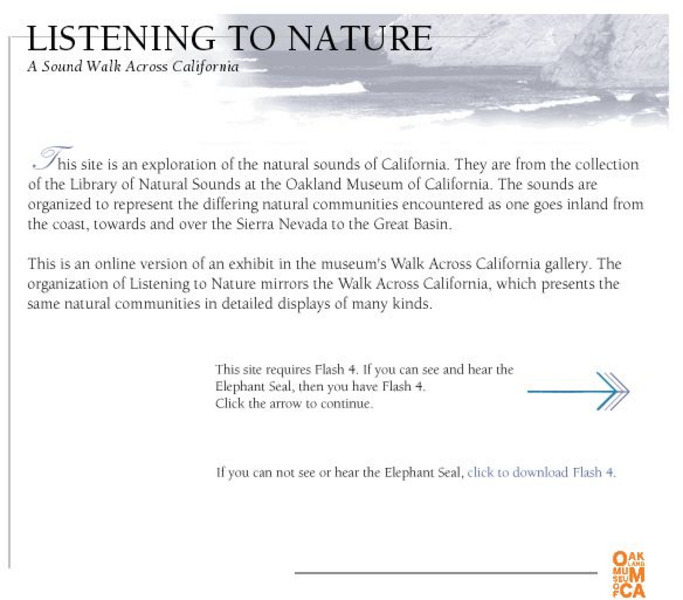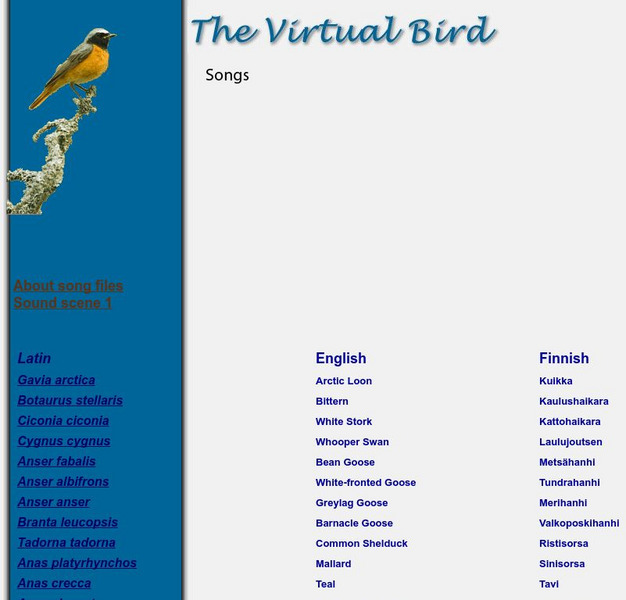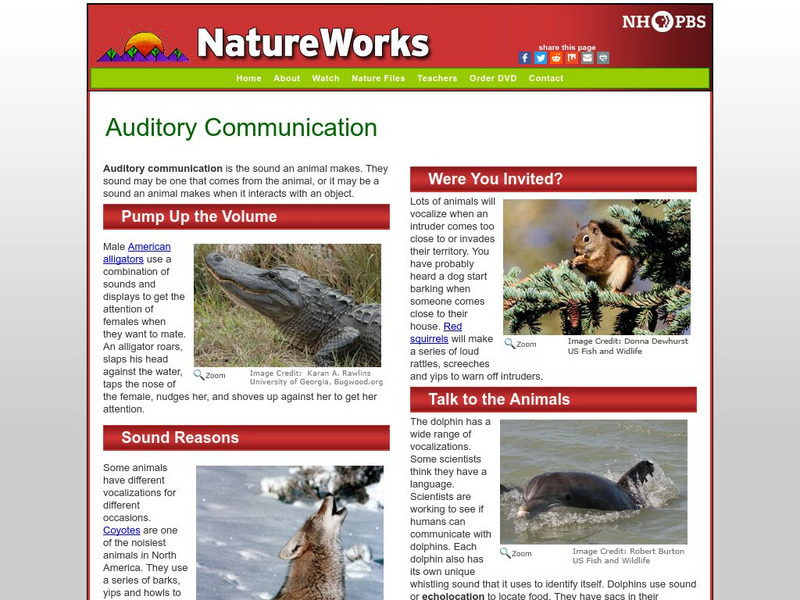NOAA
Noaa: Pmel: Acoustic Monitoring, Bioacoustics
Outlines the National Marine Mammal Laboratory's project studying whale acoustics (the sounds whales make). Links to clear acoustics tutorial. Also includes whale biology, with acoustic descriptions and sound clips of their calls. Very...
Cornell Lab of Ornithology
Cornell Lab of Ornithology
This resource from the Cornell University provides lots of great information about birds in general, and a "sound of the week" link where you can hear a different birdsong every week. Also find seasonal bird cams that allow students to...
Oakland Museum of California
Listening to Nature: A Sound Walk Across California
Terrific site with a wide variety of animal sounds, accompanied by species specific information.
TED Talks
Ted: Ted Ed: How Whales Breathe, Communicate and Fart With Their Faces
Comparative anatomist Joy Reidenberg explains how majestic whales "fart with their face" (a process more formally known as echolocation) to send their unique sounds through the water. [6:24]
Other
The Virtual Bird: Birdsounds
This site contains a number of sounds files with birdsongs of many different types of birds.
American Museum of Natural History
American Museum of Natural History: Communication O Logy Card
Turn over this interactive OLogy card and start learning bite-size pieces of useful information about how animals communicate.
CK-12 Foundation
Ck 12: Life Science: Animal Communication
[Free Registration/Login may be required to access all resource tools.] What does the word "communication" make you think of? Talking on a cell phone? Texting? Writing? Those are just a few of the ways in which human beings communicate....
Alabama Learning Exchange
Alex: Echolocation Stations: Exploring Sound
During this instructional activity students will have the opportunity to explore sound. This instructional activity should be taught during an ongoing unit about whales. Students will navigate different websites to learn more about...
Defenders of Wildlife
Kids' Planet: Who Am I?
Being a good listener is the key to winning this interactive game. Click on the numbers and listen to the sounds. To win, you must identify the animal making the sound. Immediate feedback given.
PBS
Nh Pbs: Nature Works: Auditory Communication
Describing some of the reasons that animals make sounds, this website gives concrete examples that make acoustic (auditory) communication easy to understand.











